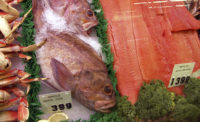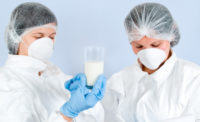Researchers from Kansas State University (KSU), Manhattan, Kan., are deploying small air bubbles invisible to the human eye in a quest to improve several popular dairy products and co-products.
Food scientist Jayendra Amamcharla said his research team is perfecting a process to incorporate air bubbles into condensed milk and yogurt to make the texture of these products more desirable for consumers.
"The consumer trend is toward high-protein yogurt products," says Amamcharla, an assistant professor of animal sciences and industry. "But, one of the disadvantages of having higher proteins is that it increases the viscosity, or thickness, of the yogurt. It becomes so thick that you can eat it only with a spoon. We have incorporated air bubbles into a high-protein yogurt to reduce its viscosity, so that it is drinkable."
The patent-pending process will be fairly simple to implement for milk processing facilities.
"From the manufacturers' side of this, it will improve the efficiency of processing milk, thus saving money for the plant," Amamcharla says. "The other side is consumers. We are improving the acceptability of high-protein dairy products. There shouldn't be any differences in how these products taste, but there should be an improvement in how they feel on the tongue and in the mouth when consumers eat these products."
The benefits of incorporating air bubbles will go beyond yogurt. The researchers are also finding positive results in other products and processes used in the dairy industry, including condensed milk, milk protein concentrates and whey protein concentrates.
Kansas State University's work has been funded by the Midwest Dairy Food Research Center, St. Paul, Minn., and the National Dairy Council, Des Plaines, Ill. Amamcharla credits Bingyi Li, master's student in food science and Zhe "Dylan" Liu, postdoctoral researcher in animal sciences and industry, as being especially critical in the progress the team has made so far.


